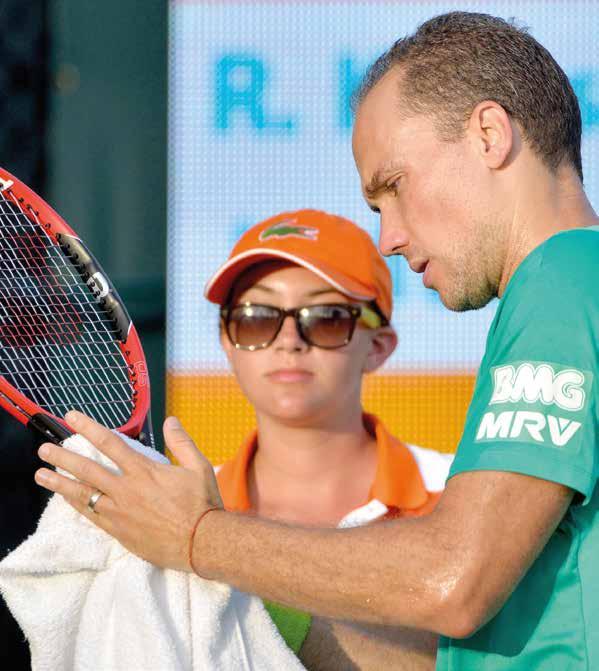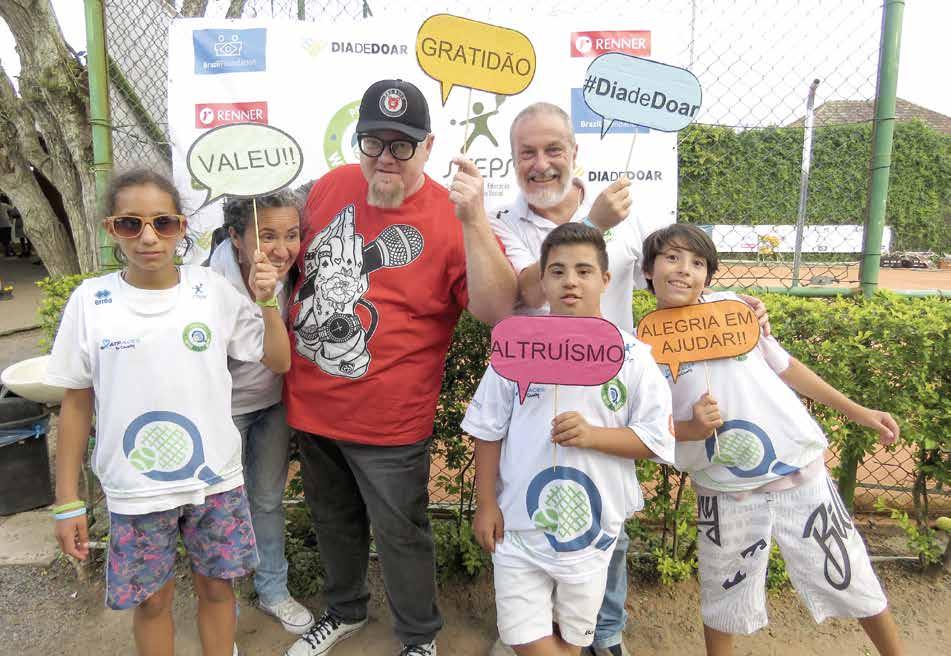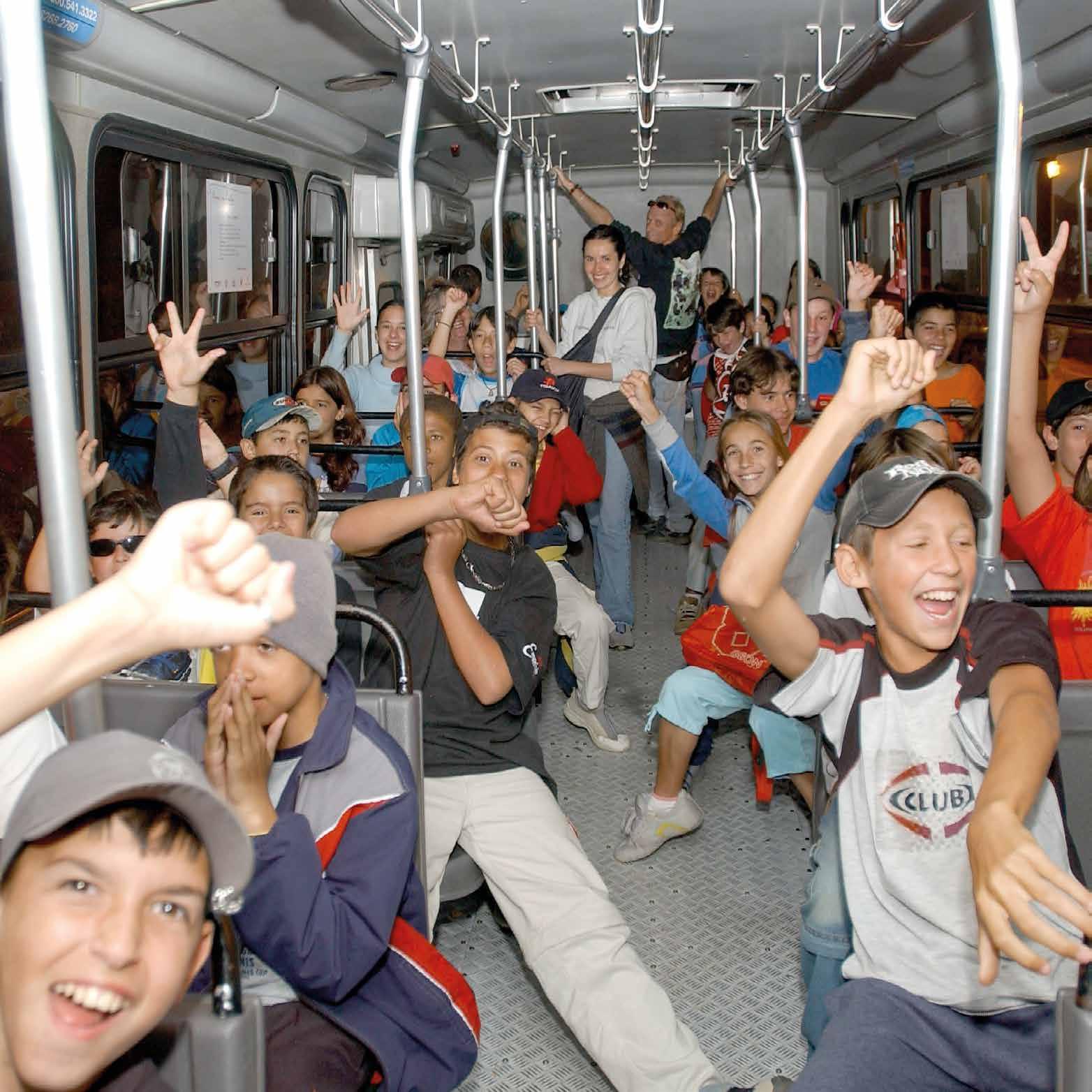
6 minute read
THE TECHNIQUES PERSEVERANÇA PERSEVERANCE
tenista obteve o título de dupla número 1 do mundo, usando a pulseirinha da gratidão. Sem dúvida, foi o melhor ano da sua carreira até então.
Outro momento marcante da aplicação de um atributo foi quando o fogo quase destruiu o sonho do WimBelemDon. Em abril de 2018, enquanto as crianças almoçavam, teve início um incêndio de grandes proporções na sede do projeto. E assistir às chamas tomarem conta de algo construído com tanta garra e com tanto amor foi um dos momentos mais difíceis para todos os que faziam parte daquela história. “Quando a gente olhou para o telhado, a sensação foi indescritível. Parecia que tudo estava acabado”, conta Luciane. Por sorte, ninguém ficou ferido, mas os corações estavam apertados diante do que tinha acontecido.
Advertisement
“No dia seguinte, foi emocionante ver a energia de todo mundo pegando junto, ajudando a tirar toda aquela sujeira e a tocar a bola para frente. Todos estavam focados, trabalhando para dar uma sacudida, um upgrade no projeto. Era esse o sentimento. Tem coisas que a gente não consegue explicar”, conta Luciane.
Foi a oportunidade de trazer à tona a PERSEVERANÇA “Passamos um período sem ver as crianças, e o retorno foi comovente. Elas tiveram força para transformar uma situação muito ruim da vida delas. Não estava tudo perdido, afinal. Foi um momento muito rico e significativo para todos.” A sensação de tristeza e de impotência foi ressignificada. Persistência, superação e renovação eram as palavras de ordem. Todos estavam imbuídos desses sentimentos e, juntos, fizeram, mais uma vez, tudo dar certo.
WimBelemDon sent Bruno Soares the new band corresponding to this attribute. And in October 2016, the tennis player became the world’s number 1 in the men’s doubles. Without a doubt, it was the best year of his career up until then. Another memorable moment of working on a personal attribute was when the fire nearly destroyed the WimBelemDon dream. In April 2018, while the kids were having lunch, a large fire started in the project’s headquarters. Watching the flames consuming something built with such dedication and love was one of the hardest moments for everyone who was part of that story. ‘When we looked up to the roof, the feeling was impossible to describe. It looked like everything had come to an end’, Luciane recalls. Luckily, no one got hurt, but hearts were broken over what had happened.
‘The next day, it was really moving to see the energy of everyone coming together to help clean all that mess and keep moving on. We were all focused, working on shaking things up and upgrading the project. That was the feeling. There are things we just can’t explain’, Luciane says. That was the opportunity to bring up PERSEVERANCE. ‘We went for some time without seeing the children and the return was really emotional. They had the strength to transform a really bad situation in their lives. Nothing was lost, after all. It was a really rich, meaningful moment for everyone’. The feeling of grief and powerlessness was transformed. Persistence, overcoming and renewal was the motto. Everyone was imbued with these feelings and, together, made everything right again.
EDUCANDA FAZ O JURAMENTO NO PALCO DO EVENTO UÉ?! SOPA?, EM 2017

“PROMETO PRATICAR O ATRIBUTO DA EMPATIA DENTRO E FORA DO PROJETO, COM AMIGOS E FAMILIARES, COM CONHECIDOS E DESCONHECIDOS, E COM TODOS OS SERES VIVOS DO PLANETA”

PUPIL TAKING THE PLEDGE ONSTAGE AT THE 2017 UÉ?! SOPA! EVENT
“I SWEAR TO PRACTISE THE ATTRIBUTE OF EMPATHY, INSIDE AND OUTSIDE THE PROJECT, TOWARDS FRIENDS AND FAMILY, TOWARDS ACQUAINTANCES AND STRANGERS, AND TOWARDS ALL LIVING BEINGS IN THIS PLANET”
The Crowd

elém Novo começou a mudar no dia em que apareceu uma placa de “aluga-se” em frente àquela quadra de tênis abandonada. O sonho dos fundadores do WimBelemDon, de dar às crianças o direito de sonhar com um futuro melhor, pouco a pouco foi tomando forma. Num dia, o terreno limpo; no outro, ideias colocadas em prática; em seguida, portão aberto para as crianças; e, a partir disso, a transformação daquelas crianças e adolescentes em cidadãos de verdade; a mudança de uma comunidade. WimBelemDon iria se tornar uma referência: de projeto social, de possibilidade de crescimento, de transformação de vidas.
O primeiro contato direto com a comunidade foi estabelecido por Suzana Bertoni dos Santos, que procurou a Escola Estadual de Ensino Fundamental Evarista Flores da Cunha para explicar o projeto. O objetivo era promover uma parceria para selecionar alunos. “Ela me contou sobre a sua experiência numa iniciativa em Los Angeles, nos Estados Unidos, que trabalhava com crianças latinas. Pensei que era golpe”, conta a então diretora da Evarista, Rosane Santos de Moraes. Isso porque Belém Novo era um bairro carente em termos de projetos, de ações, de atividades para crianças. “Se você quisesse colocar um filho na natação ou no judô, não tinha aqui. A opção era pagar para se deslocar. Aí entrava a questão econômica, também”, explica Rosane.
A ideia de reunir as famílias dos alunos, seus responsáveis, para falar do projeto, explicar de que maneira as crianças seriam atendidas, que os propósitos não estavam ligados apenas ao tênis, MAS À VALORIZAÇÃO DA VIDA, fez a diretora dar mais atenção à proposta. Poderia funcionar. “Tivemos uma relação de confiança. O projeto estava de acordo, inclusive, com o que estava sendo pensado como linha pedagógica da escola. Já no elém Novo began to change the day a ‘for rent’ sign appeared in front of that abandoned tennis court. The dream of the founders of WimBelemDon, of giving local children the right to design a better future, took shape little by little. One day, the court was cleared; the next day, ideas were put into practice and soon the gate was open for the children and teenagers and their subsequent transformation into true citizens, changing the whole community. WimBelemDon would become a charitable project role model due to its growth and transformative capacity. The first direct contact with the community was made by Suzana Bertoni dos Santos, who went to state-funded Evarista Flores da Cunha Primary School to explain the project. The goal was to establish a partnership to select pupils. ‘She told me about her experience with a charity in Los Angeles, USA, working with Latino children. I thought it was a scam’, recalls the Evarista Head Teacher, Rosane Santos de Moraes. Belém Novo was an area deprived of projects, actions, activities for children. ‘If you wanted your child to have swimming or judo lessons, there were no options. You would have to pay to go somewhere else. Then financial means would also be an issue’, Rosane explains.
The idea of gathering the pupils’ families and legal guardians to talk about the project, explaining how the children would be attended to and that the goals were not exclusively focused on tennis practice, BUT ALSO VALUES FOR LIFE, made the Head Teacher feel more favourably towards the proposition. It could work. ‘We built a relationship based on trust. The project was also in agreement with what we thought the pedagogical alignment of the school should be. From the very start, WimBelemDon was integrated with the school administration and the families, who início houve integração do WimBelemDon com a direção e com as famílias, que eram incluídas em diversas atividades”, conta a gestora.
As famílias passaram a enxergar o projeto também como um espaço seguro para as crianças. Elas sabiam o que os pequenos estavam fazendo e com quem. E mais: mesmo que fosse um projeto gratuito, as crianças não estavam soltas no tempo e no espaço, aponta Rosane. “Aquele trabalho tinha uma finalidade. O projeto tinha um compromisso com as crianças e as crianças também tinham um compromisso com o projeto – e com elas mesmas. Deveriam estar bem em quesitos disciplinares, pedagógicos. Isso sempre foi colocado de forma muito clara para elas e para as famílias.” Até porque, para a diretora, seria por meio desse comprometimento das crianças que o projeto poderia se desenvolver, alinhar outras parcerias, crescer e continuar ajudando a comunidade. “Tinha que dar certo!” were all included in various activities’, the Head Teacher recalls.
The families began to see the project as a safe space for the children too. They knew what the kids were doing and who they were with. What is more: even though the project was free, the children were not let loose in time and space, Rosane points out: ‘the work had a purpose. The project had a commitment towards the children and the children also had a commitment towards the project and themselves. They needed to do well at school. This was always clearly explained to them and to their families’. The Head Teacher believes that it was based on this level of commitment from the children that the project could grow, establish other partnerships and continue to help the community. ‘It had to work out!’.











